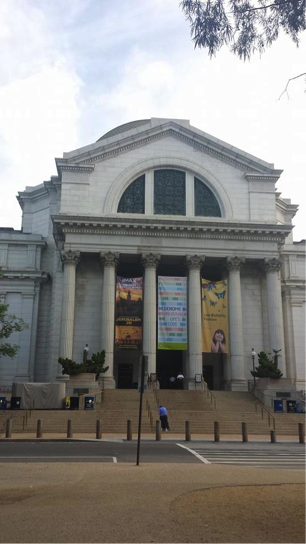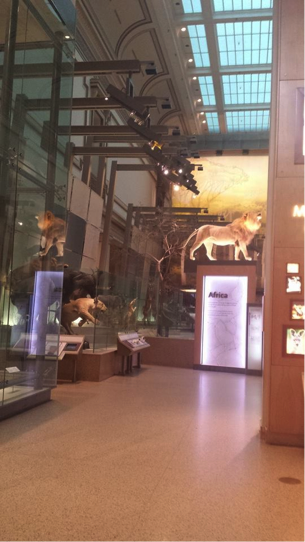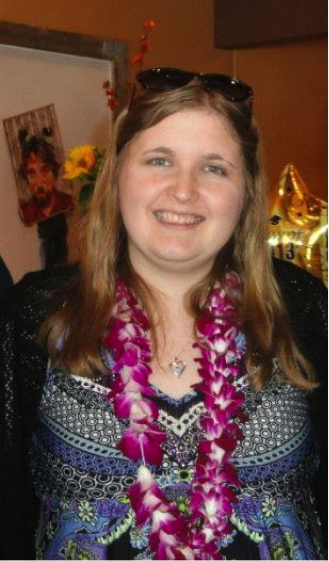 |
| Facade, Smithsonian’s National Museum of Natural History |
My earliest memory of the Natural History Museum is climbing the steps to see the “stuffed animal zoo.” It was a very rainy day and our plans of visiting the National Zoo were put on hold. However, my mom had an idea so that I- only about four or five at the time- could still see animals. I had no idea at the time what exactly she meant by “stuffed animal,” but I had a blast and returned frequently during our yearly trips up from Florida. The stairs seemed so much taller back then. Now they’re just a quick jaunt up to something much more than a place to escape the rain. As the years and visits went by, I found that I did not get bored by the many visits. Instead, I started looking at different aspects of the museum- beyond the educational tags and videos. I started seeing the museum as an entity and watching how much it meant to the different people visiting.
 |
| Mammal Hall, Smithsonian’s National Museum of Natural History |
I completed my undergraduate degree at Florida State University, majoring in Interdisciplinary Social Sciences with a focus on Anthropology and History. I also completed a minor and certificate program in Museum Studies. I am currently working on completing my graduate degree at Catholic University of America in Library Information Science with a focus on Cultural Heritage Information Management.
Being able to work with the Smithsonian Libraries was an amazing experience. I was able to spend the last six weeks working with the Biodiversity Heritage Library as part of the Professional Development Internship Program. Those weeks flew by as I worked on a number of different projects. One of the main projects I worked on had to do with BHL’s issue tracking system, called Gemini. With digital libraries comes an even bigger audience which can lead to even more input. BHL users are able to note problems, questions, or requests that they have with items in the library which are then sent through to the issue tracking system. I was able to help unravel some of the difficult bibliographic questions which were anchored in the age old “what were the publishers thinking?” Bibliographic leg work made me feel as though my librarian skills were taking me down the path of a detective. Except instead of a dark alley I was making my way through the cyber-shelves of OCLC, wandering through different countries’ books to add to my collective knowledge about a title.
 |
| Mariah Lewis, BHL Professional Development Intern |
While working on different issues in the issue tracking system I was able to make edits to the records in the BHL. After doing cataloging and metadata work in previous internships I found it very interesting to see how that data was stored and edited in a digital library setting. The collaborative effort that went into editing BHL records and answering questions in the Gemini system was incredible. With participating institutions all over the world, communication and team work was indispensable.
Working with BHL was a big change from my previous library work. It was my first time in a library setting not working with books. The transition from working with books and documents in a digitization setting to never seeing a book was not as difficult as I was expecting. I was given first-hand experience working with digital surrogates or- as some would say- totally new digital objects. Beyond this, it was really interesting to see how you can work with people all over the country and world with technology. While that seems obvious, BHL takes this to a different level and really works at having clear communication lines. The collaborative effort was probably the most inspiring part of the internship. I saw how BHL’s work can be used in other aspects of librarianship which complements my library and information science education and gives me hope and ideas for the future of librarianship.
Mariah Lewis
BHL Professional Development Intern





Leave a Comment